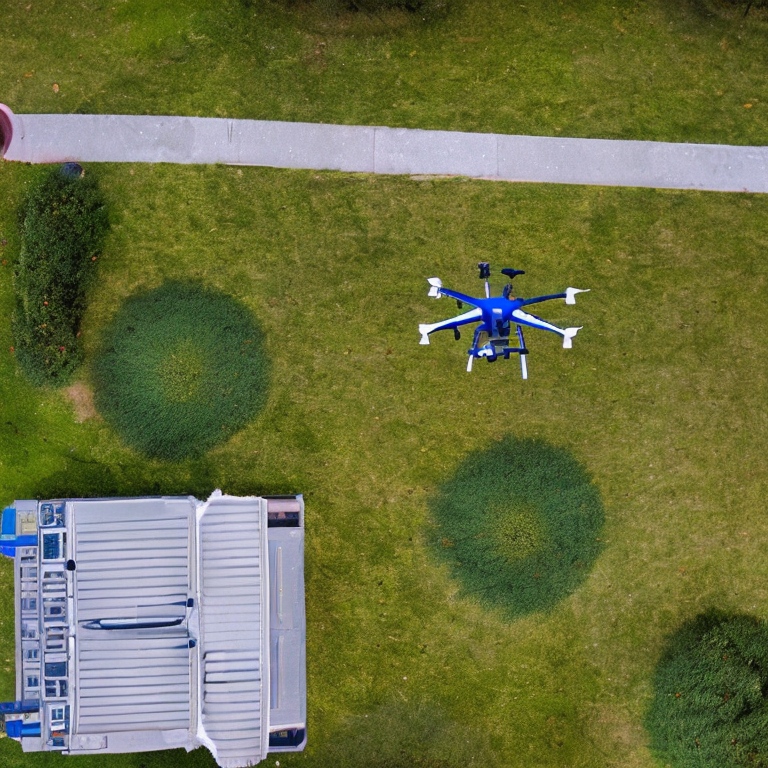Introduction: The World of Quadcopter Flying
Quadcopters, also known as drones, have revolutionized the world of aerial photography and videography. They are also used for various other purposes, such as surveying land, delivering goods, and even for military purposes. Quadcopters are becoming more and more popular among hobbyists and enthusiasts, and for good reason. They are easy to fly, and with a little bit of practice, you can master the art of quadcopter flying. In this article, we will unlock the secrets of quadcopter flying and discover how easy (or hard) it really is.
The Basics: Understanding the Components of a Quadcopter
Before you start flying a quadcopter, it is essential to understand its components. A quadcopter has four arms, each of which has a motor and a propeller. The motors are controlled by an electronic speed controller (ESC), which is connected to a flight controller. The flight controller is the brain of the quadcopter, and it receives input from the pilot through a radio transmitter. The flight controller processes the input and sends signals to the ESCs to adjust the speed of the motors, which in turn controls the movement of the quadcopter.
Getting Started: Tips for First-Time Quadcopter Pilots
If you are a first-time quadcopter pilot, there are a few things you should keep in mind. Firstly, it is important to start with a small and inexpensive quadcopter, such as the Hubsan X4 or the Syma X5C. These quadcopters are easy to fly and are perfect for beginners. Secondly, it is important to practice in an open and spacious area, away from trees, buildings, and people. Lastly, it is important to read the manual carefully and understand the controls of the quadcopter before taking off.
Advanced Techniques: Tricks and Maneuvers to Master
Once you have mastered the basics of quadcopter flying, you can move on to more advanced techniques. One of the most popular techniques is the flip, where the quadcopter flips in mid-air. Another popular technique is the roll, where the quadcopter rolls to the left or right. These techniques require precise control and timing, and they take a lot of practice to master.
Troubleshooting: Common Quadcopter Problems and Solutions
Quadcopters can sometimes encounter problems, such as drifting, flipping, or losing control. These problems can be caused by various factors, such as wind, low battery, or a faulty motor. To troubleshoot these problems, it is important to understand the cause and take appropriate action. For example, if the quadcopter is drifting, you can adjust the trim settings or recalibrate the gyro.
Safety Precautions: Essential Guidelines for Safe Flying
Safety should always be a top priority when flying a quadcopter. It is important to follow the guidelines set by the Federal Aviation Administration (FAA), such as flying below 400 feet, avoiding airports and other restricted areas, and keeping the quadcopter in sight at all times. It is also important to wear eye protection and avoid flying near people or animals.
Choosing the Right Quadcopter: Factors to Consider
When choosing a quadcopter, there are several factors to consider, such as size, weight, camera quality, and battery life. It is important to choose a quadcopter that suits your needs and budget. If you are interested in aerial photography or videography, you should choose a quadcopter with a high-quality camera. If you are interested in racing, you should choose a quadcopter with a lightweight and agile design.
Conclusion: Quadcopter Flying Made Easy (or Hard)
In conclusion, quadcopter flying can be easy or hard, depending on your level of experience and skill. With the right quadcopter, practice, and knowledge, you can master the art of quadcopter flying and unlock its full potential. Remember to always fly safely and follow the guidelines set by the FAA. Happy flying!









































